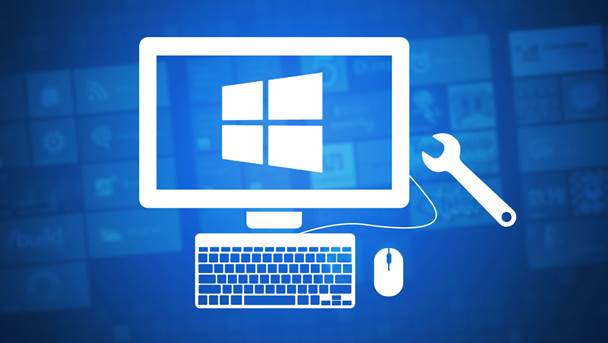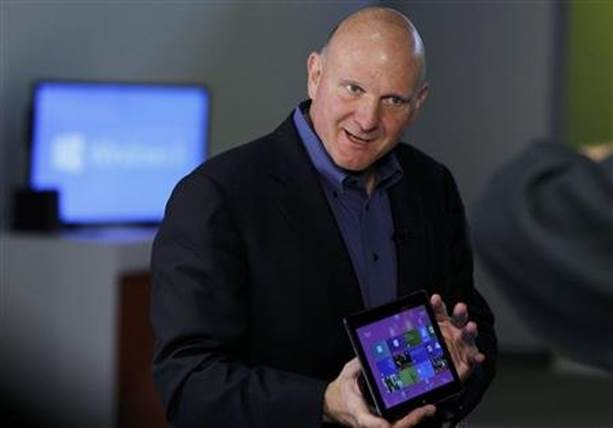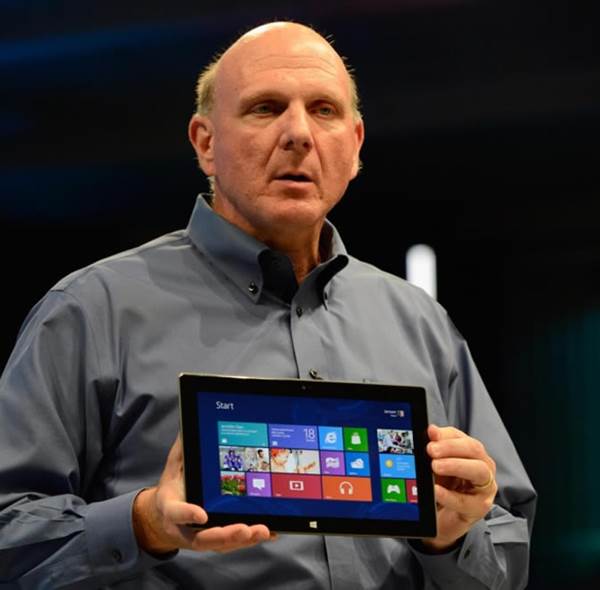Windows 8 success is a critical part in
Microsoft’s future plans, but are those objectives already too ambitious?
It’s an economic reality that those who
rely on limited sources of income are vulnerable. That’s as true a statement
for those who made buggy whips when the automobile appeared as it is for
Microsoft, the world’s largest software house.

Is
Windows 8 Already In Deep Trouble?
The profitability of this entire company is
built on two products, Windows and Office, and the second one is entirely
reliant on the first.
The continued existence of Microsoft is
intrinsically bound to Windows and its ultimate success or failure. With each
new release Microsoft essentially bets the farm, with the full knowledge that
one day that calculated risk might backfire.
Is this the time that the bet fails
catastrophically?
Failure To Launch
Not many weeks have passed since Windows 8
launched, and already a number of stories were circulating suggesting that this
product isn’t selling in the numbers that Microsoft had initially hoped.
Merle McIntosh, senior VP of product
management for online for US retailer NewEgg described Windows 8 sales as
‘slow’ in an interview with Readwrite. He wouldn’t mention numbers, presumably
to save Microsoft’s embarrassment, but the launch didn’t generate the sales
explosion that a new Windows release normally unleashes.

Merle
McIntosh, senior VP of product management for online for US retailer NewEgg
described Windows 8 sales as ‘slow’ in an interview with Readwrite.
At almost the same time, Paul Thurrott
(winsupersite.com) ran a story that indicated much the same, based on
information he’d obtained from a Microsoft insider.
He presented the internal view of sales for
Windows 8 as ‘disappointing’, and even coloured that reaction by saying that it
was the opinion of the company that this wasn’t a product issue as such but the
fault of the PC makers and their ‘inability to deliver’!
However, it wasn’t just the chattering
class that was taking the shine off Windows 8. Even Microsoft CEO Steve Ballmer
expressed some reservation when talking about sales. In an interview with the
French publication, Le Parisien, he described Surface RT sales as ‘modest’,
unless a translation issue modified his words.
A number of news sites asked for a progress
report on Windows 8 sales, and got the perfunctory “Microsoft doesn’t comment
on rumours or speculation” in return.
With this coming the same week that Windows
chief Steven Sinofsky left the company abruptly, it seems to suggests that not
all is well in the world of Windows.
Destined To Fail
The parallels between Windows 8 and Vista
are already been drawn, as this was another product that arrived with plenty of
pomp but failed to garner the affection that its predecessor XP had achieved.
I’ve seen plenty of supposedly smart people
argue that Vista didn’t fail, in that Microsoft sold many millions of copies,
and then just a few years later convinced many of those customers to spend
again on Windows 7.
From an entirely economic viewpoint, I’m
sure that Vista showed a return on investment, and it certainly helped Windows
7 get a bigger early foothold in the market.
However, the sales are only part of the
story, because the real damage that Vista did was to Microsoft’s reputation,
something that’s really difficult to represent on a spreadsheet.
In an interview that Steve Ballmer gave to
The Telegraph in 2009, he described it in these terms, “We got some uneven
reception when [Vista] first launched in large part because we made some design
decisions to improve security at the expense of compatibility.
I don’t think from a word-of-mouth
perspective we ever recovered from that.” That’s a tacit admission that Vista
hurt Microsoft in ways that weren’t easily quantifiable, but have had a lasting
impact. The other factor in play as Windows 8 approached was the decidedly good
cop/bad cop approach that Microsoft seems to take, where if it makes a poor
product, it encourages people to buy the next one, while getting things right
has the opposite effect.

Steve
Ballmer, presenting to the Surface tablet with Windows 8, the one that went on
to sell modestly
This was certainly true of Vista, where the
solidity of XP became a barrier to upgrading that Microsoft fought to overcome.
Most people are happy with Windows 7, so why should they change it?
The game is ‘justification’ and the
arguments that Microsoft has been putting forward all seem to assume that
you’ll want Windows 8 to go with your Windows phone, Surface tablet and your Xbox
360.
By definition that’s a huge assumption,
because 97% of the smartphone market are happy not to have a Windows phone, and
none of those other items are exactly ubiquitous. Other selling points of
Windows 8 seem less than compelling.
Another issue for Windows 8 to overcome was
the negative aura that started to circulate about the preview versions in
respect of the interface, once called ‘Metro’. From the outset, lots of people
didn’t like the most radical change that Microsoft made to the Windows model.
It didn’t help that Microsoft didn’t really
explain its thinking behind the tiled interface or how the ‘Metro’ side of the
coin and the conventional desktop were designed to coexist. In fact, it now
seems apparent that they’re not really made to cooperate on any level, and what
Microsoft was offering was akin to having two operating systems on one
computer. That’s confusing and people don’t see bewilderment as desirable.
This problem was compounded by how
Microsoft reacted to the negative comments, given that it released the preview
versions ostensibly to get ‘feedback’. That people hated the interface wasn’t
the response it anticipated, and at this stage of the product’s development it
was committed to delivering the solution in that form. The feedback only
informed Microsoft that Windows 8 was going to be a tough sell, and it prepared
accordingly for that.
“While this might have made perfect sense
in the boardroom of Microsoft, it has been just another confusing part of an
overly complicated story”
It wasn’t only getting grief from its
customers; it was also feeling the heat from its PC hardware partners in regard
to the ‘Surface’ announcements. The idea that Microsoft would branch out into
PC hardware wasn’t the one they’d anticipated, even if a number did sign up to
make their own Surface products to compete. Given that Microsoft provides its
operating system to its Surface hardware for free and it charges third-party
companies to use it, that was never going to be a level playing field.
There was extra confusion regarding the new
Windows RT products, which ran Windows 8 but due to their ARM Cortex-A9 CPU
architecture couldn’t run Windows X86 applications. While this might have made
perfect sense in the boardroom of Microsoft, it has been just another confusing
part of an overly complicated story.
Given all these things, it isn’t really a
big surprise that Windows 8 isn’t exactly flying off the shelves, but the
reasons for failure might be more subtle than those I’ve just outlined.